Reducers for petrol cutters: types and maintenance
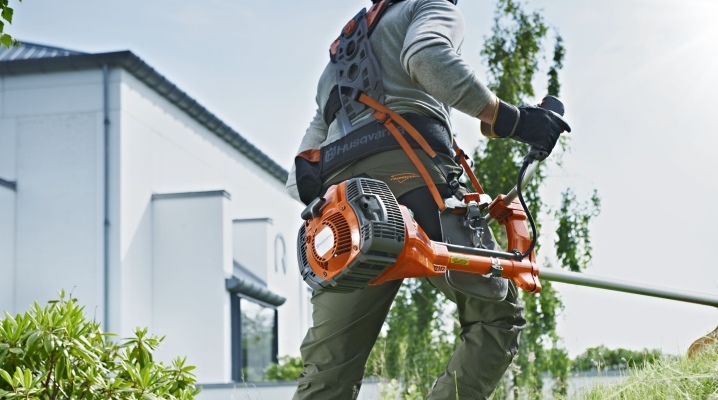
The petrol trimmer, or petrol trimmer, is a very popular type of garden technique. It is designed for mowing grass lawns, trimming the edges of the site, etc. This article will focus on such an important part of the brushcutter as the gearbox.
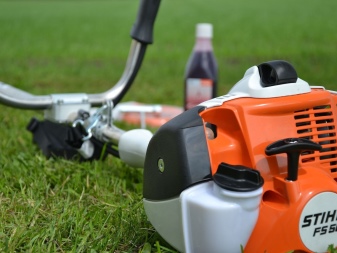
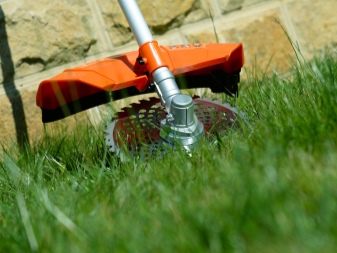
Device, functions
The brushcutter gearbox transmits the torque from the motor to the working (cutting) parts of the device.
This function is provided by the internal structure of the gearbox, which is a system of gears that reduce or increase the speed of rotation of parts.
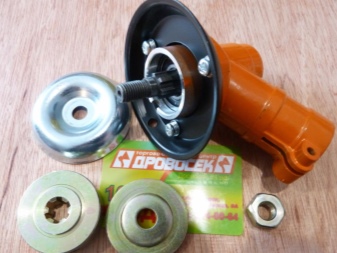
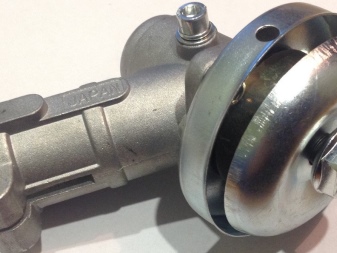
Reducers used for personal plots are:
- wave;
- cylindrical;
- spiroid;
- conical;
- planetary;
- worm;
- combined.
This classification is based on the type of traction characteristic, namely the mechanical transmission of torque.
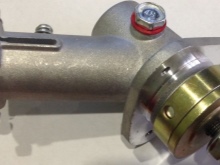
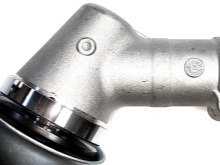
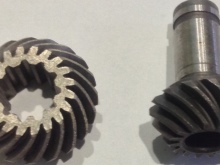
Also, gearboxes differ in the shape and dimensions of the bore: it can be square, round or star-shaped. Of course, the most common gearboxes are with a round seat. At the location, the gearbox can be lower or upper.
For normal operation of the mechanism, there must be no mechanical damage to the gearbox parts and the maintenance of a certain temperature regime. Any cracks, chips and overheating will cause the petrol cutter / trimmer to malfunction and stop, which in turn will require gearbox repair. Regular lubrication of the mechanism can significantly reduce the risk of these problems and increase the life of the trimmer.
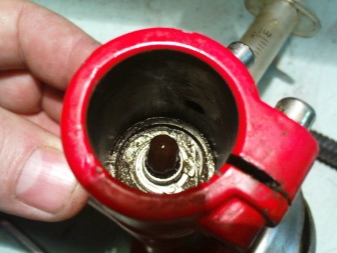
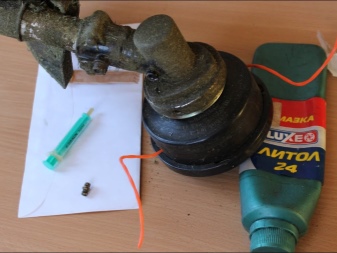
Possible problems
There are several common faults, to which the petrol cutter gearbox is exposed.
- Excessive heat. The cause of this problem may be the absence or lack of lubrication, an unsuitable brand of lubricating oil, or unattached parts of the mechanism (if the gearbox is new). It is quite easy to eliminate such a malfunction - lubricate (replace the grease) with a sufficient amount of oil of a suitable brand or work with the trimmer for a while in a gentle mode with frequent stops.

- Knocking during operation, too much freedom of movement and / or stopping during the rotation of the shaft. The prerequisites for such a malfunction may be: failure of a pair of bearings (due to lack or improper lubrication, excessive operation of the device) or improper installation, as a result of which the anthers are damaged. The solution to this problem is to disassemble the mechanism and replace the damaged parts with new ones ordered in advance.
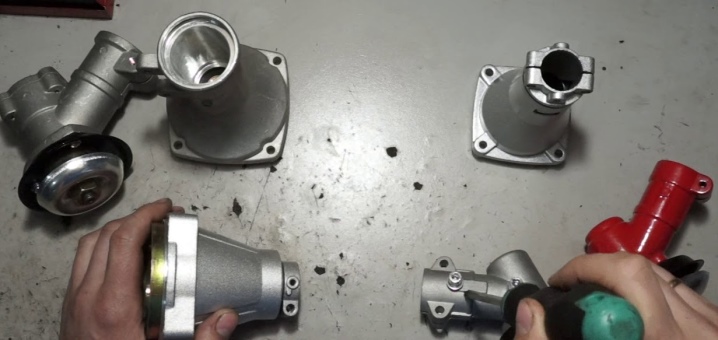
- The wobbling of the reducer or its fall off the main pipe. The reason is improper fastening of the parts of the mechanism or a crack / chipping of the case of a mechanical nature. There is only one way out - to replace the gearbox housing.
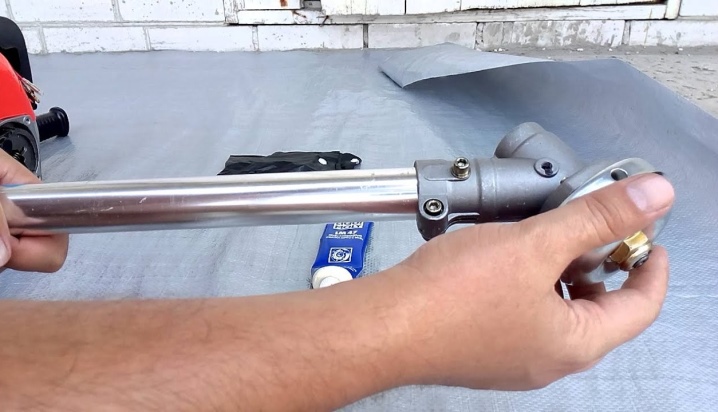
- The problem of fixing the location of the reducer. The root cause of this phenomenon is the abrasion of the pipe section on which the part is attached. Handicraft repair (for a while) consists in wrapping the gearbox landing site with textile tape or replacing the main trimmer pipe.
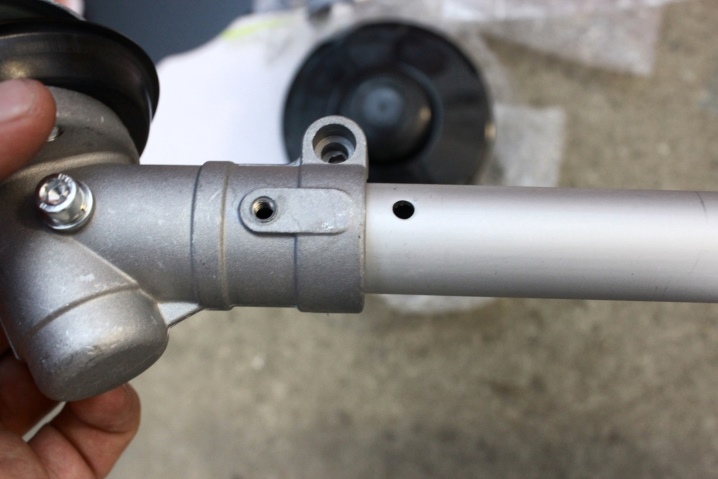
- The trimmer blade does not spin (at all or at high loads), while unpleasant noises are heard. This malfunction can occur due to grinding of the teeth of the bevel gear. The problem is eliminated by disassembling the mechanism and replacing a pair of bevel gears.
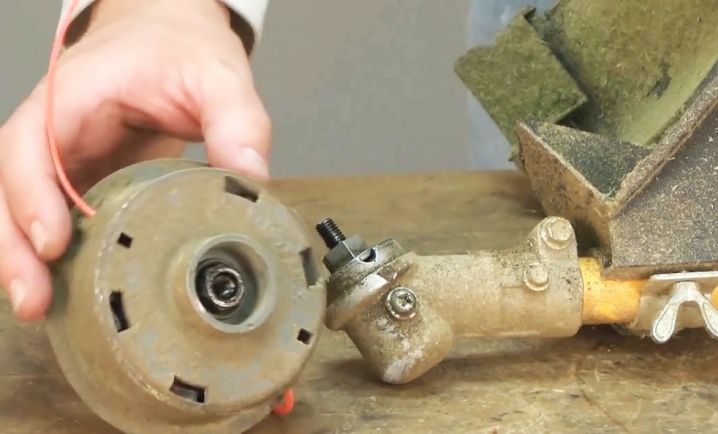
How to disassemble?
Sequencing when disassembling the gearbox for subsequent repair is as follows:
- first of all, loosen the fastening (tightening) elements and remove the part from the pipe;
- clean the mechanism with a brush dipped in clean gasoline and dry;
- bring the ends of the locking circle together (using round-nose pliers) and remove it;
- do the same procedure with the other stopper;
- then preheat the body of the mechanism with a technical hair dryer;
- knock out the secondary shaft with gears and bearing (hitting the upper end with a block of wood), you can try to do this without preheating, but you only need to use a wooden hammer to knock out the shaft - a metal one can damage the body or the shaft itself;
- do the same for the main shaft.
The gearbox is now disassembled and prepared for the replacement of individual parts.
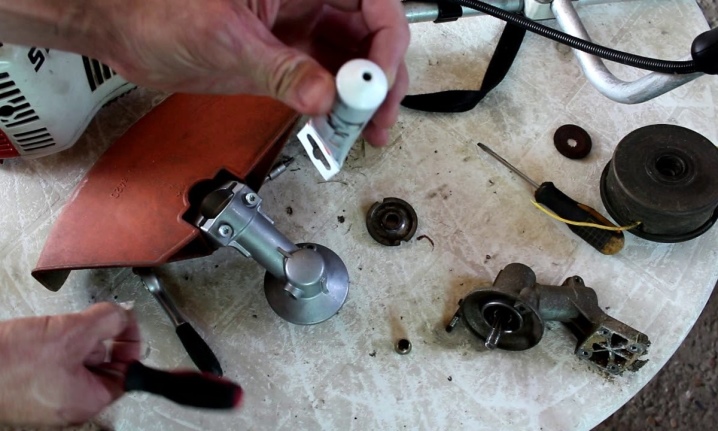
Maintenance
The most important thing in gearbox maintenance is timely and regular lubrication. This procedure is necessary to reduce mechanical friction and, as a result, heat and wear of the contacting parts.
Lubrication of moving parts, especially gears and shaft, must be carried out according to the rules printed in the operating instructions for the device.
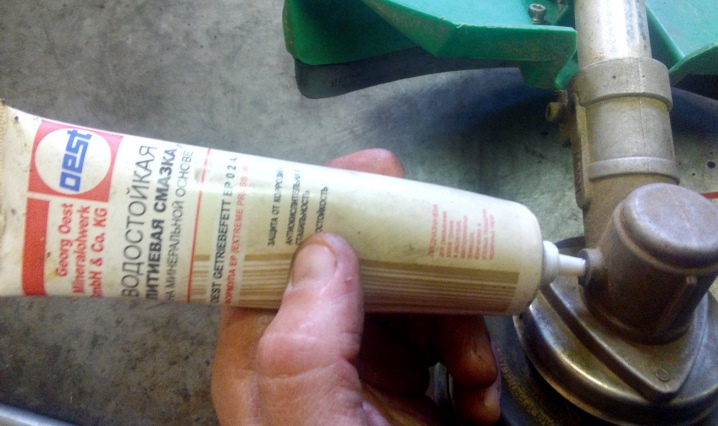
If for some reason you do not have access to this information, remember the important rules.
- Lubrication of structural elements should be carried out every 8-10 hours of device operation.
- More abundant and frequent lubrication is necessary if you have installed new gears to replace damaged ones, if during operation of the device there is a slowdown in rotation of the knives or the gearbox makes an abnormal noise during operation.
- Select lubricant carefully. Many garden equipment manufacturers also produce accessories for them, including lubricants. The ideal option would be to use the "native" composition. Depending on the degree of consistency, there are plastic, semi-liquid and solid lubricants. The first type is used for both gear and screw drives, therefore it is considered universal. The second type is a suspension containing additives and additives. The third type in its original state is similar to the first, so carefully study the label and instructions for the lubricant.
- To lubricate the gearbox, you do not need to disassemble it - the trimmer design provides a special opening for this purpose. Many manufacturers produce lubricants in the form of tubes with a long nose. The diameter of the inlet for the lubricant is not always the same as the diameter of the spout. This problem can be easily solved using a conventional syringe, the use of which has one more advantage - precise control over the amount of lubricant squeezed out.
- Also, cleaning the air filter is part of the trimmer maintenance process. To do this, remove the casing, remove the part, rinse with gasoline, dry, clean the landing site from accumulated dirt. Then insert the filter into place and fix the casing.
See below for the upper and lower gearbox of petrol cutters.



































































The comment was sent successfully.